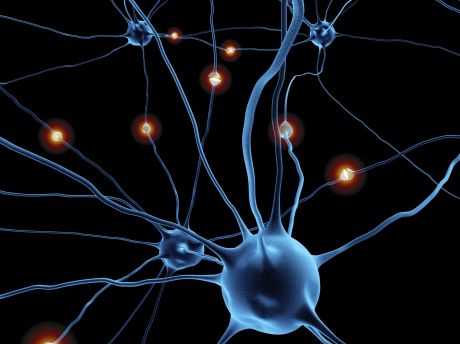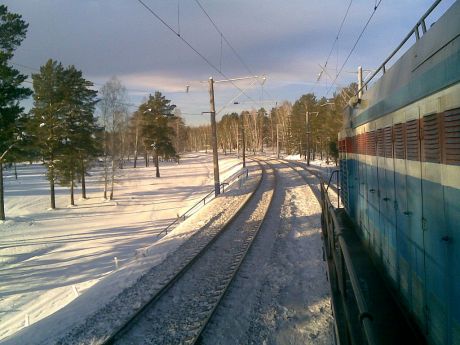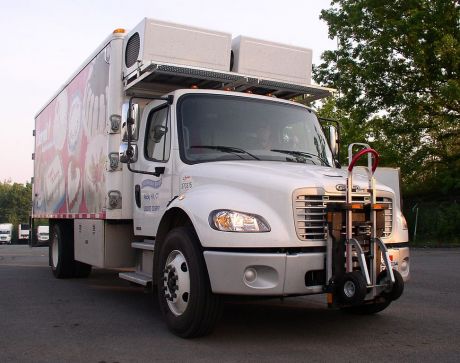
An EU initiative set up a research network on energy efficiency and the optimised use of home appliances. Currently, these white goods use more than 50 % of the total electrical energy consumed in the home.

Morphing skin offers the potential to decrease the fuel consumption of aircraft by allowing wings to adjust to changing flight conditions. EU-funded researchers have developed an engineering framework able to define the optimal design of such adaptive structures.

Boundary layer effects play a very important part in determining the drag for an aircraft. EU-funded researchers developed technology for drilling suction holes in the main aircraft drag-producing components, such as the wing leading edges and tailplanes, which promises to bring significant fuel savings.

The emerging field of 2D materials has seen exponential growth since isolating graphene, a graphite layer that is just one atom in thickness. EU-funded scientists applied strain on sheets of graphene and a molybdenum-based semiconductor, demonstrating a fundamentally new way to control device properties at the nano scale.

Although the benefits of using lightweight polymer composites are well known, their wider adoption has been hindered by uncertainty over their performance when subjected to extreme heat. Now, EU-funded scientists have developed new materials that are either fire-resistant or provide protection with a minimum weight penalty.

The EU-funded COLUMNARCODECRACKING project has successfully used ultra-high fMRI scanners to map cortical columns, a process that opens the door to exciting new applications, such as brain-computer interfaces.

Scientists are addressing health and environmental concerns over nanoparticles in the ink and pigment industry by developing non-toxic alternatives and implementing stricter safety protocols.

Shipping is the lifeblood of the modern economy and therefore vital for European businesses. Following strict regulations set by the International Maritime Organization (IMO), EU-funded scientists worked on ways to mitigate the industry's environmental impact.

EU researchers are miniaturising catalysts and chemical reactors to develop more sustainable ways to produce fine chemicals for many different industries.

An EU team tested retreaded truck tyres to compile various functional parameters required by regulations. Results include a software tool, incorporating a novel algorithm, which facilitates an efficient methodology.

A central problem in quantum physics is the development of experimental tools to obtain information about the states of matter and radiation, such as photon. EU-funded scientists worked on ways to measure the state of individual quanta of light.

Doing more with less is the mantra of our era and this is mostly evidenced by the drive towards miniaturisation in next-generation electronic systems, fuel cells and medical devices. However, the push for smaller parts requires accurate and cost-effective micro-manufacturing techniques.

The ability to tune the interaction between light and matter at the quantum level paves the path to quantum computing and sensing. EU-funded scientists have provided the theoretical framework that promises to make implementation realisable.

Lifetime and reliability are two of the most critical issues for successfully commercialising solid oxide fuel cell (SOFC) technology. EU-funded scientists revealed which mechanisms are responsible for degrading SOFC performance.

EU-funded scientists have demonstrated a radically different and green propulsion system for manned and unmanned aerial vehicles, Based on a rotating wing system, the cyclorotor could revolutionise aircraft flight.

An EU team assessed and helped to foster innovation in European regional transportation. The Smart Specialisation Platform (S3P) approach yielded tailored roadmaps for each region, culminating in a set of strategic recommendations.

Ceramic materials hold highly desirable properties for many engineering applications; however, reliability and lifetime are their Achilles heel. An EU-funded research team combined experimental and numerical methods to address these weaknesses.

EU-funded scientists successfully designed a digital-to-analogue (DAC) converter that demonstrates low distortion at high output frequencies. Pure waveforms are particularly important for new-generation wireless communications systems, cable TV or radio frequency equipment that demand high data rates.

An EU initiative combined modern software, systems and knowledge engineering together with applications' experience of the process industry. This enabled the development of novel algorithms and a software platform for robust, adaptive predictive modelling applicable to different industries.

EU researchers are developing a new noise certification process for freight and passenger trains. Quieter trains are better for the environment, particularly for people living close to railway lines.

Relying solely on the orbits of the moon, Earth and Sun, tidal energy is reliable, inexhaustible and largely predictable. EU-funded researchers successfully developed a new type of tidal energy generator prototype that is significantly cheaper and more efficient, also replacing conventional magnetic materials.

A new breed of urban public transport could fill the gap between mass and private transit options. An EU initiative introduced a novel urban transport system based on a new generation of vehicle.

Despite the advances in fuel cells, substantial research work is still necessary to meet the expected capabilities. An EU-funded project made significant progress towards developing a control approach to cope with their challenging features.

Lack of legislation and innovation in the European food packaging industry affect food safety and competitiveness. An EU initiative studied packaging safety and introduced innovative packaging materials.

Variability of electrical output from wind turbines could pose a challenge in supply reliability if wind power is the only source of electricity. Using electricity from wind turbines to produce and store hydrogen can compensate for the intermittency of renewable energy sources (RESs).
























